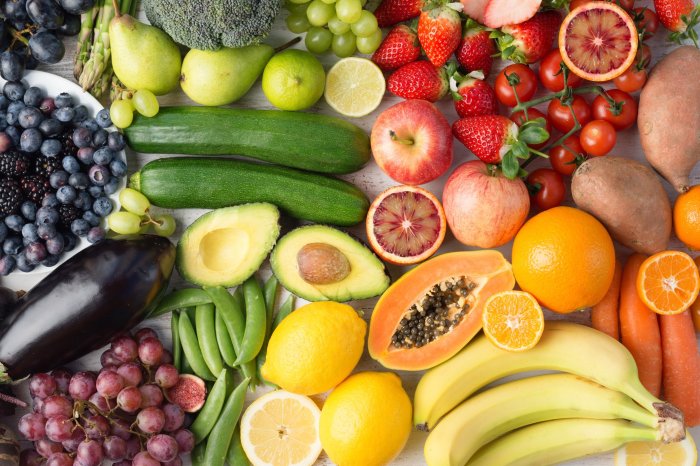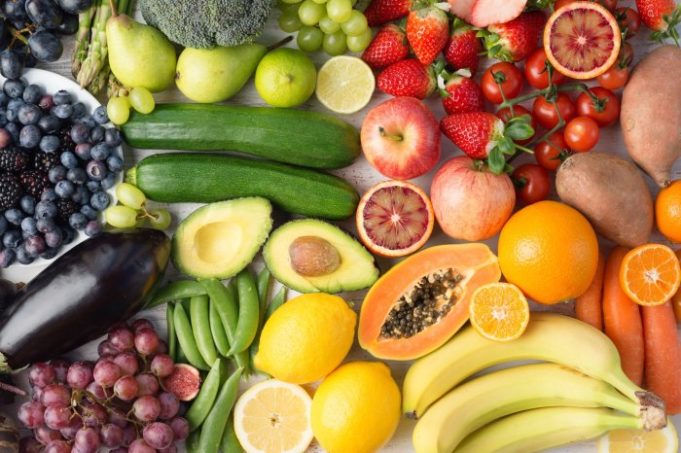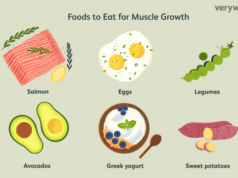How to get more vegetables in your diet is a question many people ask themselves. Vegetables are essential for a healthy lifestyle, providing a wealth of vitamins, minerals, and antioxidants that support our overall well-being. While we all know the benefits, incorporating more vegetables into our daily routines can be challenging. This guide aims to provide practical tips and strategies to help you seamlessly integrate vegetables into your meals and achieve a balanced, nutrient-rich diet.
We’ll explore creative ways to make vegetables a regular part of your meals, discuss various cooking methods to preserve their nutritional value, and offer solutions for overcoming common obstacles. By understanding the importance of vegetables, learning different preparation techniques, and finding ways to make them more appealing, you can unlock the power of plant-based nutrition and enjoy the delicious flavors and health benefits they offer.
Understanding the Importance of Vegetables
Vegetables are essential components of a healthy diet, offering a wide range of nutrients that support overall well-being. They are packed with vitamins, minerals, antioxidants, and fiber, all of which play crucial roles in maintaining good health.
Nutritional Benefits of Vegetables
Vegetables provide a rich source of essential vitamins and minerals, many of which are not readily available in other food groups. These nutrients contribute to various bodily functions, from energy production and cell growth to immune system support and disease prevention.
- Vitamin C: A powerful antioxidant that helps protect cells from damage caused by free radicals. It also plays a vital role in collagen synthesis, which is essential for skin, bones, and blood vessels. Good sources of Vitamin C include broccoli, bell peppers, and kale.
- Vitamin A: Essential for vision, cell growth, and immune function. It also helps protect against infections and maintain healthy skin. Good sources of Vitamin A include carrots, spinach, and sweet potatoes.
- Potassium: A mineral that helps regulate blood pressure and maintain fluid balance in the body. It also plays a role in muscle function and nerve transmission. Good sources of potassium include potatoes, tomatoes, and leafy green vegetables.
- Fiber: An indigestible carbohydrate that helps promote digestive health, regulate blood sugar levels, and lower cholesterol. Good sources of fiber include beans, peas, and broccoli.
Health Risks Associated with Low Vegetable Intake
A diet low in vegetables can increase the risk of developing various chronic diseases, including heart disease, stroke, type 2 diabetes, and certain types of cancer. These conditions are often linked to poor dietary habits, such as consuming too much saturated fat, sugar, and processed foods while neglecting essential nutrients found in vegetables.
- Heart Disease: A low vegetable intake can contribute to high cholesterol levels, which can lead to plaque buildup in the arteries, increasing the risk of heart attacks and strokes.
- Type 2 Diabetes: Vegetables are low in calories and rich in fiber, both of which help regulate blood sugar levels. A diet low in vegetables can increase the risk of developing insulin resistance, a precursor to type 2 diabetes.
- Cancer: Some vegetables contain antioxidants that can help protect against cancer cell growth. A diet low in vegetables may increase the risk of developing certain types of cancer, such as colorectal and stomach cancer.
Incorporating Vegetables into Meals
Making vegetables a regular part of your diet doesn’t have to be a chore. With a little creativity and planning, you can easily incorporate them into every meal, making your diet healthier and more flavorful.
Strategies for Incorporating Vegetables
Here are some practical tips to make vegetables a regular part of your meals:
- Start with small changes: Instead of trying to overhaul your entire diet at once, start by adding one extra serving of vegetables to your meals each day. This could be a side salad with lunch, a handful of spinach in your smoothie, or a cup of roasted vegetables with dinner.
- Make vegetables the star: Instead of treating vegetables as a side dish, consider making them the main focus of your meal. You can create delicious and satisfying vegetarian dishes like stir-fries, salads, or vegetable curries.
- Get creative with your cooking methods: Don’t be afraid to experiment with different cooking methods to make vegetables more appealing. Roasting, grilling, sautéing, steaming, and even baking can bring out unique flavors and textures in vegetables.
- Add vegetables to your favorite dishes: Instead of excluding vegetables from your favorite meals, find ways to incorporate them. For example, you can add chopped vegetables to pasta sauce, stir-fried rice, or even your morning omelet.
- Make it easy with pre-cut vegetables: If you’re short on time, pre-cut vegetables can be a great time-saver. Look for frozen, pre-cut vegetables or fresh pre-cut options at your local grocery store.
- Plan your meals ahead of time: By planning your meals ahead of time, you can ensure that you have plenty of fresh vegetables on hand and that you’re incorporating them into your meals consistently.
Creative Ways to Incorporate Vegetables
Here are some creative ways to incorporate vegetables into different meals:
Breakfast
- Vegetable omelets or frittatas: Add spinach, mushrooms, bell peppers, and onions to your omelet or frittata for a hearty and nutritious breakfast.
- Smoothies: Blend in leafy greens like spinach, kale, or romaine lettuce for a boost of vitamins and minerals.
- Breakfast burritos: Fill your breakfast burrito with sautéed vegetables like peppers, onions, and mushrooms for a flavorful and satisfying start to your day.
Lunch
- Salads: Create a colorful and nutritious salad with a variety of vegetables, such as lettuce, tomatoes, cucumbers, carrots, and bell peppers.
- Vegetable wraps: Fill whole-wheat tortillas with grilled vegetables, hummus, and your favorite toppings for a quick and easy lunch.
- Soup: Enjoy a bowl of hearty vegetable soup for a warm and satisfying lunch.
Dinner
- Stir-fries: Combine your favorite vegetables with lean protein and a flavorful sauce for a quick and easy dinner.
- Roasted vegetables: Roast vegetables like broccoli, Brussels sprouts, carrots, and potatoes with herbs and spices for a delicious and healthy side dish.
- Vegetable pasta dishes: Replace traditional pasta sauces with vegetable-based sauces, or add a variety of vegetables to your favorite pasta dishes.
Sample Weekly Meal Plan
Here is a sample weekly meal plan that prioritizes vegetables:
| Day | Breakfast | Lunch | Dinner |
|---|---|---|---|
| Monday | Spinach and feta omelet | Lentil soup with whole-wheat bread | Grilled chicken with roasted Brussels sprouts and sweet potatoes |
| Tuesday | Green smoothie with kale, banana, and almond milk | Vegetable wrap with hummus, avocado, and sprouts | Salmon with steamed asparagus and quinoa |
| Wednesday | Oatmeal with berries and chopped walnuts | Salad with grilled chicken, chickpeas, and mixed greens | Vegetable curry with brown rice |
| Thursday | Yogurt with fruit and granola | Leftover vegetable curry | Vegetarian chili with whole-wheat bread |
| Friday | Scrambled eggs with sautéed mushrooms and spinach | Tuna salad sandwich on whole-wheat bread with lettuce and tomato | Pizza with vegetable toppings |
| Saturday | Pancakes with fruit and maple syrup | Grilled veggie burger on a whole-wheat bun | Pasta with marinara sauce and sautéed zucchini and peppers |
| Sunday | Breakfast burrito with eggs, black beans, and salsa | Leftover pasta with marinara sauce | Roast chicken with roasted vegetables |
Vegetable Preparation Techniques
The way you prepare your vegetables can significantly affect their nutrient content and flavor. While some cooking methods can help retain nutrients, others can lead to nutrient loss. Understanding different cooking techniques and their impact on nutrient retention can help you make informed choices for maximizing the nutritional value of your vegetables.
Different Cooking Methods for Vegetables
Different cooking methods have varying impacts on nutrient retention. While some methods, such as steaming and stir-frying, help preserve nutrients, others, like boiling, can lead to significant nutrient loss.
Steaming
Steaming is a gentle cooking method that involves cooking vegetables in a basket over boiling water. The steam cooks the vegetables without direct contact with the water, minimizing nutrient loss.
Roasting
Roasting involves cooking vegetables in an oven at a high temperature, typically around 400°F (200°C). Roasting brings out the natural sweetness and flavors of vegetables while retaining a significant amount of nutrients.
Grilling
Grilling involves cooking vegetables directly over a heat source, typically a grill. Grilling imparts a smoky flavor and caramelizes the vegetables, while also retaining nutrients.
Stir-Frying
Stir-frying is a quick cooking method that involves cooking vegetables in a wok or frying pan over high heat with a small amount of oil. This method cooks vegetables quickly while preserving their crispness and nutrients.
Boiling
Boiling involves cooking vegetables in water until they are tender. While boiling is a simple and convenient method, it can lead to significant nutrient loss, especially water-soluble vitamins like vitamin C and B vitamins.
Comparison of Cooking Methods
The following table summarizes the key characteristics of different cooking methods, including their time, temperature, and nutrient retention:
| Cooking Method | Time | Temperature | Nutrient Retention |
|—|—|—|—|
| Steaming | 5-15 minutes | 212°F (100°C) | High |
| Roasting | 20-40 minutes | 400°F (200°C) | Moderate to High |
| Grilling | 5-10 minutes | Medium-high heat | Moderate to High |
| Stir-frying | 2-5 minutes | High heat | Moderate |
| Boiling | 5-15 minutes | 212°F (100°C) | Low to Moderate |
It is important to note that the nutrient retention of a particular cooking method can also be influenced by factors such as the type of vegetable, the cooking time, and the amount of water used.
Making Vegetables More Appealing
Let’s face it, some vegetables aren’t exactly known for their captivating flavors. But with a few simple tricks, you can transform even the most unassuming veggies into delicious and satisfying additions to your meals.
Enhancing Flavor and Texture
There are several techniques that can elevate the flavor and texture of vegetables, making them more enjoyable to eat.
- Roasting: Roasting brings out the natural sweetness of vegetables, creating a caramelized and slightly crispy exterior. It’s a great method for root vegetables like carrots, potatoes, and sweet potatoes.
- Grilling: Grilling adds a smoky char to vegetables, giving them a unique flavor profile. Bell peppers, zucchini, and eggplant are excellent choices for grilling.
- Sautéing: Sautéing vegetables in a bit of oil over high heat allows them to retain their vibrant color and crisp texture. This technique is perfect for leafy greens like spinach and kale.
- Steaming: Steaming preserves the nutrients and natural flavors of vegetables, resulting in a tender and flavorful outcome. Broccoli, asparagus, and green beans are well-suited for steaming.
Delicious Vegetable-Based Sauces and Dips
Adding sauces and dips can significantly enhance the flavor and appeal of vegetables. Here are some delicious options:
- Hummus: A classic dip made from chickpeas, tahini, lemon juice, and garlic, hummus pairs well with carrots, celery, and cucumber.
- Guacamole: A creamy and flavorful dip made from mashed avocados, lime juice, cilantro, and spices, guacamole is perfect for dipping chips, vegetables, or even using as a topping for salads.
- Pesto: A vibrant and flavorful sauce made from basil, pine nuts, Parmesan cheese, and olive oil, pesto is delicious tossed with pasta, spread on sandwiches, or used as a dip for vegetables.
- Salsa: A spicy and tangy sauce made from tomatoes, onions, cilantro, and chili peppers, salsa is a versatile dip for chips, vegetables, and tacos.
Elevating Vegetable Dishes with Herbs, Spices, and Seasonings
The right combination of herbs, spices, and seasonings can transform a simple vegetable dish into a culinary masterpiece.
- Herbs: Fresh herbs like basil, parsley, oregano, thyme, and rosemary add bright and aromatic flavors to vegetables.
- Spices: Spices like cumin, coriander, turmeric, paprika, and chili powder can add warmth, depth, and complexity to vegetable dishes.
- Seasonings: Salt, pepper, garlic powder, onion powder, and citrus zest are essential seasonings that enhance the flavors of vegetables.
Overcoming Barriers to Vegetable Consumption
It’s great that you’re committed to eating more vegetables, but let’s be honest, life can get in the way. We all face obstacles that can make it difficult to stick to our healthy eating goals. Fortunately, with a little planning and creativity, you can overcome these hurdles and enjoy the benefits of a vegetable-rich diet.
Time Constraints
Limited time is a common barrier to vegetable consumption. Busy schedules, work commitments, and family responsibilities can make it challenging to find the time to shop, prepare, and cook vegetables.
Here are some strategies to manage time constraints:
- Plan ahead: Take some time on the weekend to plan your meals for the week. This will help you make sure you have the ingredients you need on hand and prevent last-minute scrambling for dinner.
- Prep in advance: Wash, chop, and store vegetables ahead of time. This will save you time during the week when you’re short on time. You can also pre-cook vegetables like broccoli, green beans, or carrots, and store them in the refrigerator for quick and easy meals.
- Utilize convenience options: Frozen and canned vegetables are convenient alternatives to fresh vegetables, especially when you’re pressed for time. Look for varieties that are low in sodium and free from added sugar.
Budget Limitations
Budgetary constraints can make it difficult to afford a variety of fresh vegetables.
Here are some ways to stretch your budget:
- Buy seasonal produce: Seasonal vegetables are generally less expensive. Check out your local farmers’ markets for even better deals.
- Consider frozen and canned vegetables: These are often more affordable than fresh vegetables and can be just as nutritious.
- Grow your own vegetables: If you have space, consider growing some of your own vegetables. This can be a fun and rewarding way to save money and enjoy fresh, homegrown produce.
Picky Eaters
Getting children or adults to eat more vegetables can be a challenge, especially if they have picky palates.
Here are some tips to encourage vegetable consumption:
- Introduce vegetables gradually: Don’t overwhelm picky eaters with a sudden influx of vegetables. Start with a few vegetables they already like and gradually introduce new ones. Try pairing vegetables with familiar foods they enjoy.
- Make vegetables fun and appealing: Cut vegetables into fun shapes, use colorful dips, and let children help with meal preparation. Involving them in the process can make vegetables more appealing.
- Be patient and persistent: It may take time for picky eaters to develop a taste for vegetables. Continue to offer vegetables in different ways and be patient with the process.
Vegetable Variety and Diversity: How To Get More Vegetables In Your Diet

Just like a balanced diet requires a variety of foods from different food groups, consuming a wide range of vegetables is crucial for optimal health. Each vegetable offers a unique blend of vitamins, minerals, and antioxidants that contribute to overall well-being.
Vegetable Color and Nutrient Profile
Different colors of vegetables indicate the presence of various phytonutrients, which are plant compounds with beneficial health effects. Consuming a rainbow of vegetables ensures a comprehensive intake of these valuable nutrients.
| Color | Nutrient Profile | Examples |
|---|---|---|
| Red | Lycopene, vitamin C, potassium | Tomatoes, red bell peppers, watermelon, beets |
| Orange | Beta-carotene (vitamin A), vitamin C, potassium | Carrots, sweet potatoes, oranges, pumpkin |
| Yellow | Vitamin C, potassium, folate | Yellow squash, corn, bananas, pineapple |
| Green | Vitamin K, folate, vitamin C, potassium | Spinach, broccoli, kale, green beans, avocado |
| Blue/Purple | Anthocyanins, vitamin C, potassium | Blueberries, eggplant, purple cabbage, blackberries |
| White | Allicin, vitamin C, potassium | Cauliflower, garlic, onions, mushrooms |
Examples of Vegetable Types and Their Unique Health Benefits, How to get more vegetables in your diet
Here are some examples of different vegetable types and their unique health benefits:
- Cruciferous Vegetables: Broccoli, cauliflower, Brussels sprouts, kale, and cabbage are rich in glucosinolates, compounds that have been linked to a reduced risk of cancer. They also provide vitamin C, vitamin K, and fiber.
- Leafy Greens: Spinach, kale, and collard greens are packed with vitamins, minerals, and antioxidants. They are particularly good sources of vitamin A, vitamin K, folate, and iron.
- Allium Vegetables: Onions, garlic, and shallots contain allicin, a compound with antimicrobial and anti-inflammatory properties. They also support heart health and may reduce the risk of certain cancers.
- Root Vegetables: Carrots, sweet potatoes, beets, and turnips are rich in fiber, vitamins, and minerals. They provide vitamin A, vitamin C, potassium, and folate.
- Legumes: Beans, lentils, and peas are excellent sources of protein, fiber, and iron. They also contain complex carbohydrates and various vitamins and minerals.
End of Discussion
By incorporating these strategies into your daily life, you can easily increase your vegetable intake and reap the rewards of a vibrant and healthy diet. Remember, small changes can lead to big improvements in your overall well-being. Embrace the versatility of vegetables, experiment with different flavors and textures, and enjoy the journey towards a more nutritious and fulfilling lifestyle.
Detailed FAQs
How can I make vegetables more appealing to picky eaters?
Try incorporating vegetables into familiar dishes, like pasta sauces, soups, or smoothies. Use colorful vegetables to make meals visually appealing. Let children help with meal preparation, giving them a sense of ownership over their food choices.
Are frozen vegetables as nutritious as fresh ones?
Frozen vegetables are often just as nutritious as fresh, as they are typically frozen at peak ripeness. Choose frozen vegetables that are blanched and not heavily processed.
What are some easy ways to get more vegetables into my diet?
Add chopped vegetables to salads, sandwiches, or stir-fries. Keep a bowl of baby carrots, celery sticks, or cherry tomatoes readily available for snacking. Include a side of steamed or roasted vegetables with your meals.
A great way to boost your veggie intake is to freeze them! You can buy in bulk when they’re in season and then enjoy them all year long. Just be sure to check out how long do foods last in the freezer to make sure you’re using them before they go bad.
That way, you can always have a quick and healthy side dish ready to go.
Adding more vegetables to your diet can be as simple as incorporating them into your favorite meals. For example, try adding spinach to your smoothies or bell peppers to your stir-fry. While you’re focusing on your own diet, you might also consider whether your cat needs to shed a few pounds.
If so, you can learn about how to put your cat on a diet. Just remember that cats are obligate carnivores and their diet should primarily consist of meat-based foods. When it comes to vegetables, it’s best to stick to those that are safe for feline consumption, such as green beans and carrots.
Incorporating more vegetables into your diet is a great way to boost your overall health. Adding a variety of colorful vegetables can provide essential vitamins and minerals, including iodine, which is crucial for thyroid function. If you’re looking for ways to increase your iodine intake, check out this helpful guide on how to get more iodine in your diet.
Once you’ve adjusted your iodine levels, continue to explore the vast world of vegetables and discover new ways to enjoy them in your meals.
























